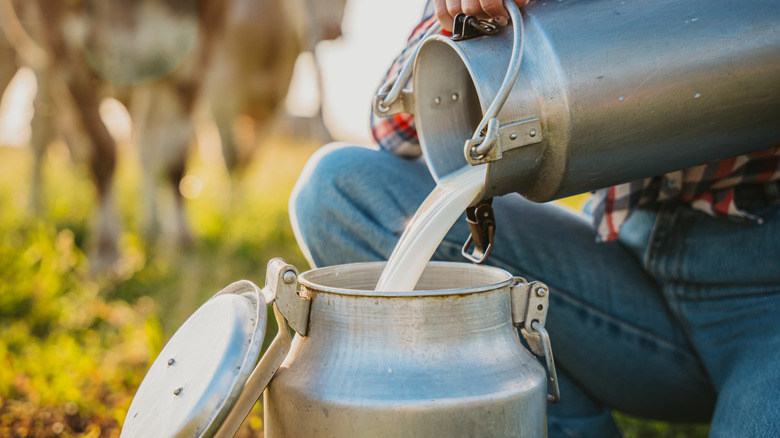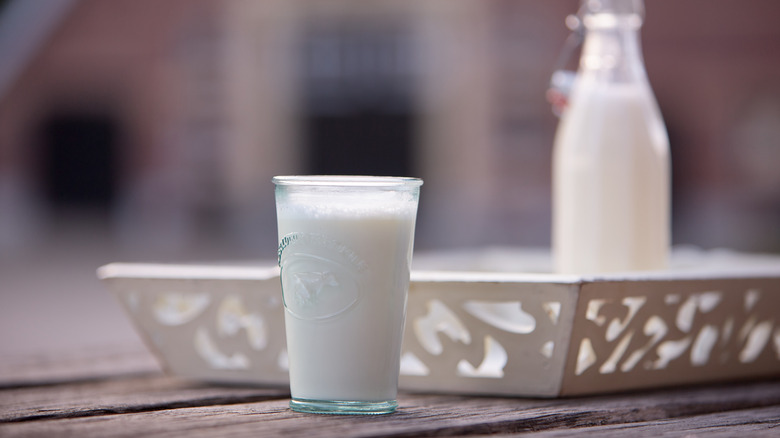Don't Drink Raw Milk Before Knowing The Risks Involved
Many take it for granted now, but drinking milk is far safer today than it was just 200 years ago. Commercially produced milk these days undergoes a crucial process called pasteurization developed in the 19th century that eliminates the germs which can cause many common and even fatal illnesses. But even in the 1800s, there were plenty of people who thought that "raw milk" lost some of its flavor and health benefits by undergoing this then-groundbreaking treatment.
Some advocates maintain that stance today, and at one point raw milk could be purchased at places as mainstream as Whole Foods (you'll have to shop more locally if you want it now). But before you go all-natural with your dairy products, it's important to know the difference between mainstream milk and this old-school alternative.
Raw milk is, simply, any animal-produced milk that hasn't been pasteurized. As a now-routine food safety procedure, pasteurization is fairly straightforward: dairy producers briefly heat milk to a set temperature in order to kill harmful germs like salmonella and E. coli. A variety of factors can influence the kinds of bacteria that occur in so-called raw milk — such as the animals that produce the milk or the environment in which they're raised — but many of the microbes present can cause all sorts of diseases, ranging from short-term food poisoning to deadly afflictions like diphtheria and tuberculosis. While a healthy, thoroughly vaccinated adult may not fall ill drinking raw milk, infants and immunocompromised individuals are at a much higher risk of contracting something. Pregnant women can even get their unborn baby sick, even if they feel fine.
Why are people saying we should drink raw milk?
Over at Whole Foods' Guide to Dairy Products, the grocery chain describes raw milk as having "rich flavor, high vitamin content and digestive enzymes," while, of course, acknowledging the aforementioned risks of consuming unpasteurized dairy products. But if raw milk supposedly tastes better and is better for our health — with some advocates even arguing that it can cure lactose intolerance (it can't) — why is it so controversial?
Raw milk's uneven acceptance is largely due to a lack of consensus over whether it's actually safe to drink at all. The FDA and major research hubs like Harvard Medical School insist in no uncertain terms that raw milk is flat-out dangerous to drink, and many health experts agree. The FDA says raw milk does not contain any probiotics, either, so the idea that pasteurization destroys both harmful and beneficial bacteria is, as the agency says, a myth.
But farmers and grassroots political organizers think otherwise. Centuries after Louis Pasteur began heating wine to keep it from souring, the process of milk pasteurization has become a political battleground. At least six states have lifted bans on the sale of raw milk in the past four years. Surprisingly, this pushback on "big dairy" regulations has crossed party lines — raw milk was once seen as a liberal, hippie fad, but now it's a popular cause for conservatives. Proponents of raw milk say pasteurization unfairly favors larger dairy farms which can afford to pasteurize, that it's yet another example of the over-processed food in American diets, and a symptom of government run amok. And some folks simply prefer the taste.

